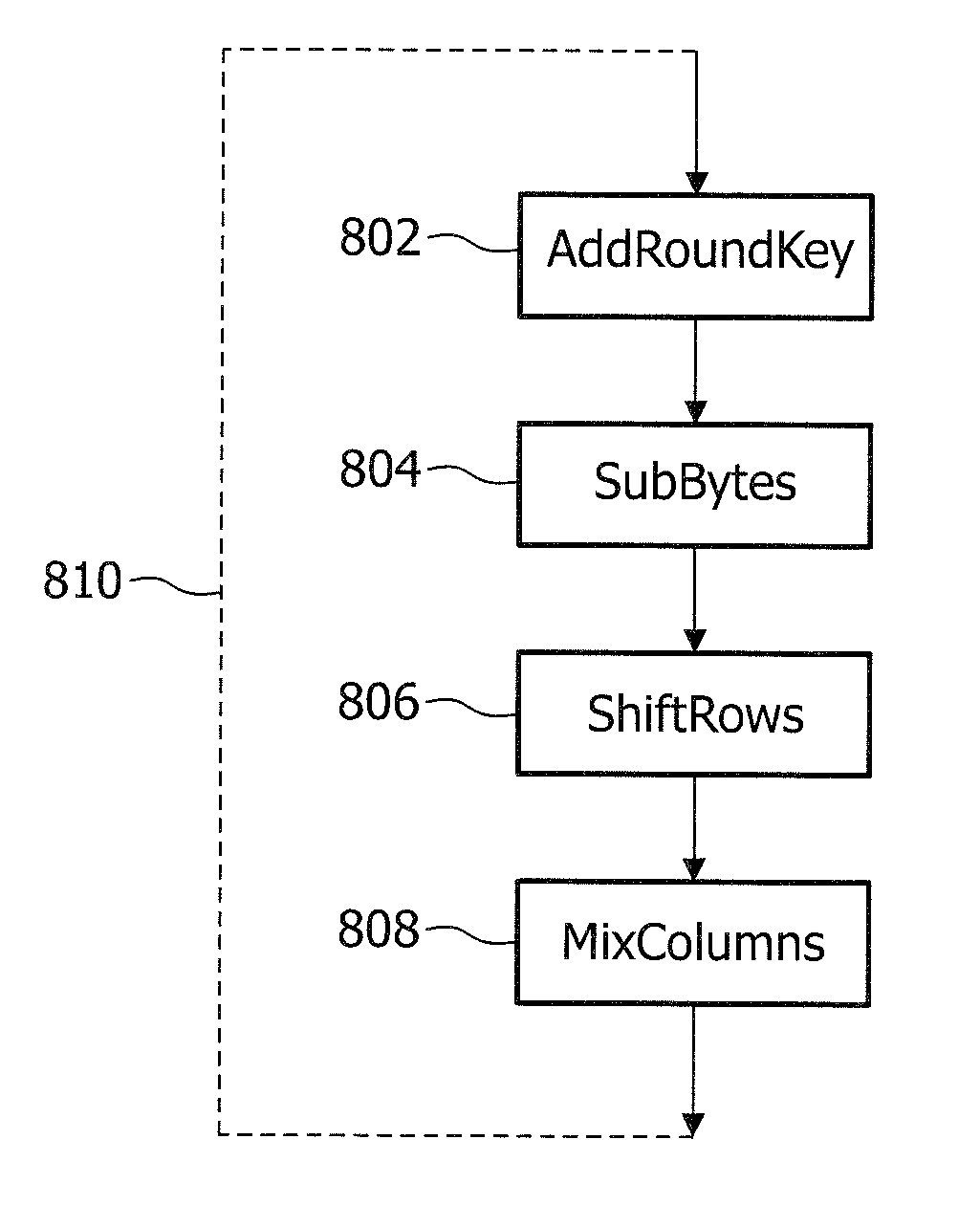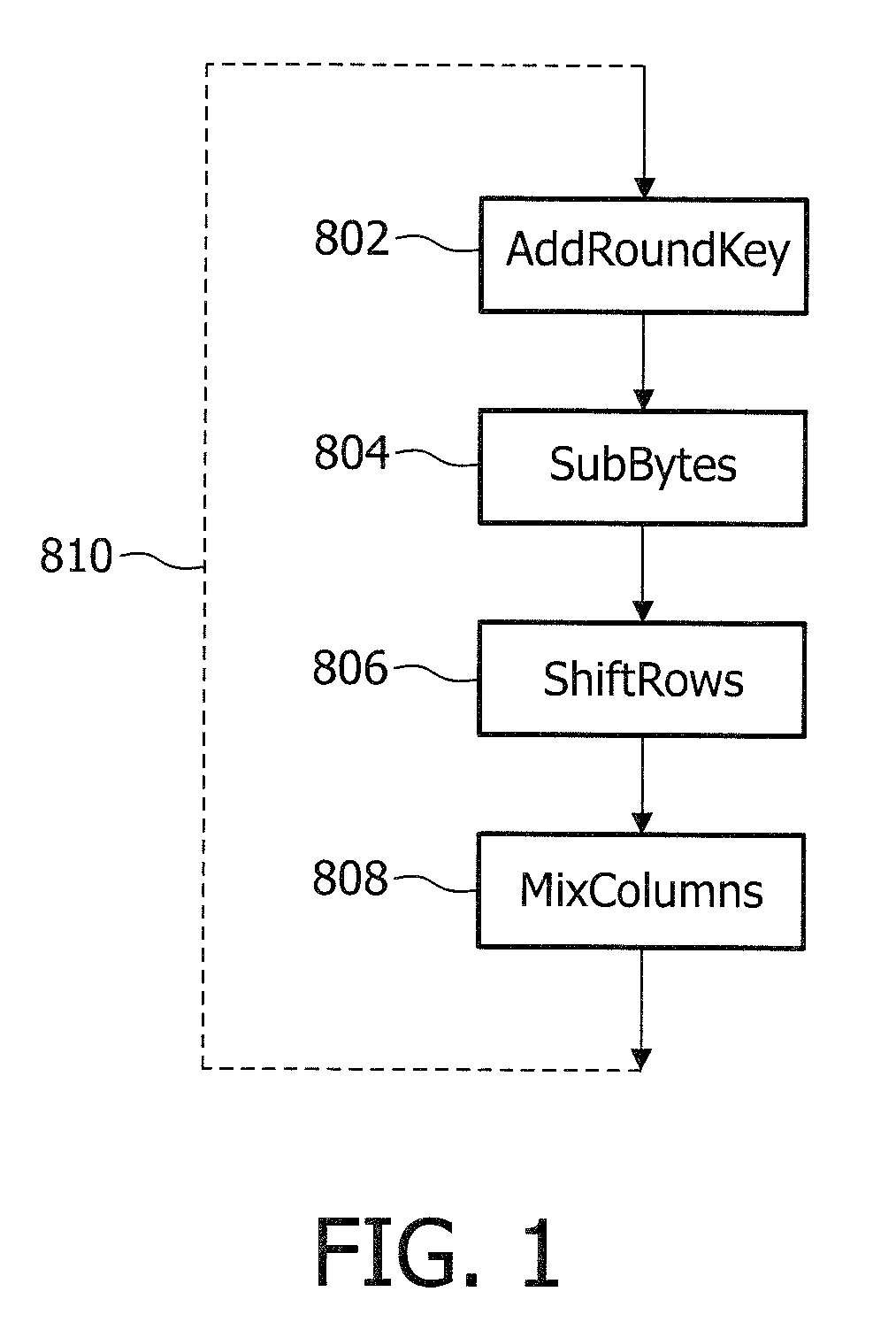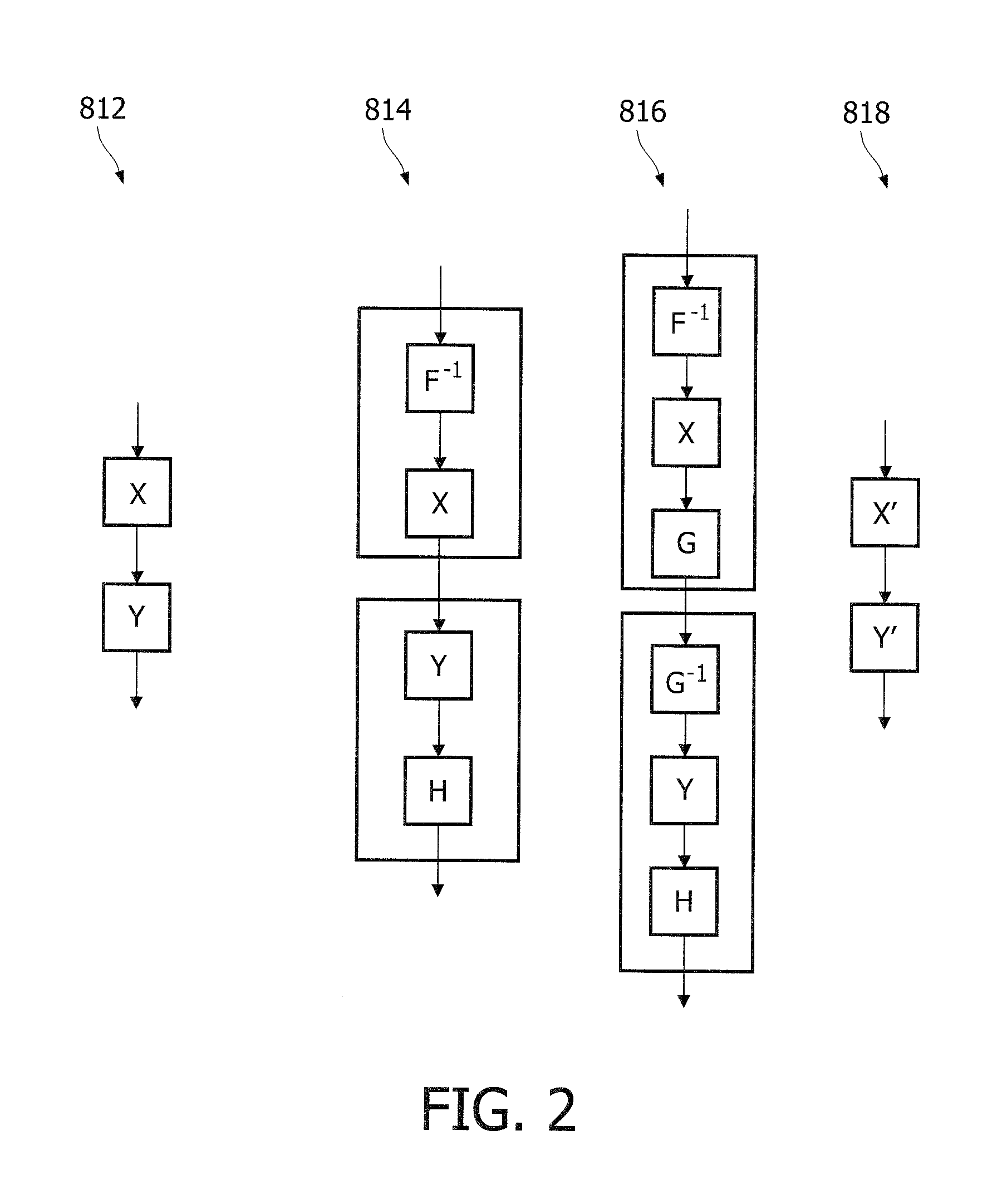White-box cryptographic system with input dependent encodings
- Summary
- Abstract
- Description
- Claims
- Application Information
AI Technical Summary
Benefits of technology
Problems solved by technology
Method used
Image
Examples
Embodiment Construction
[0060]AES is a block cipher with a block size of 128 bits or 16 bytes. The plaintext is divided in blocks of 16 bytes which form the initial state of the encoding algorithm, and the final state of the encoding algorithm is the cipher text. To conceptually explain AES, the bytes of the state are organized as a matrix of 4×4 bytes. AES consists of a number of rounds.
[0061]Each round is composed of similar processing steps operating on bytes, rows, or columns of the state matrix, each round using a different round key in these processing steps.
[0062]FIG. 1 illustrates some main processing steps of a round of AES. The processing steps include:[0063]AddRoundKey 2—each byte of the state is XOR'ed with a byte of the round key.[0064]SubBytes 4—A byte-to-byte permutation using a lookup table.[0065]ShiftRows 6—Each row of the state is rotated a fixed number of bytes.[0066]MixColumns 8—Each column is processed using a modulo multiplication in GF(28).
[0067]The steps SubBytes 4, ShiftRows 6, and...
PUM
 Login to View More
Login to View More Abstract
Description
Claims
Application Information
 Login to View More
Login to View More - R&D
- Intellectual Property
- Life Sciences
- Materials
- Tech Scout
- Unparalleled Data Quality
- Higher Quality Content
- 60% Fewer Hallucinations
Browse by: Latest US Patents, China's latest patents, Technical Efficacy Thesaurus, Application Domain, Technology Topic, Popular Technical Reports.
© 2025 PatSnap. All rights reserved.Legal|Privacy policy|Modern Slavery Act Transparency Statement|Sitemap|About US| Contact US: help@patsnap.com



